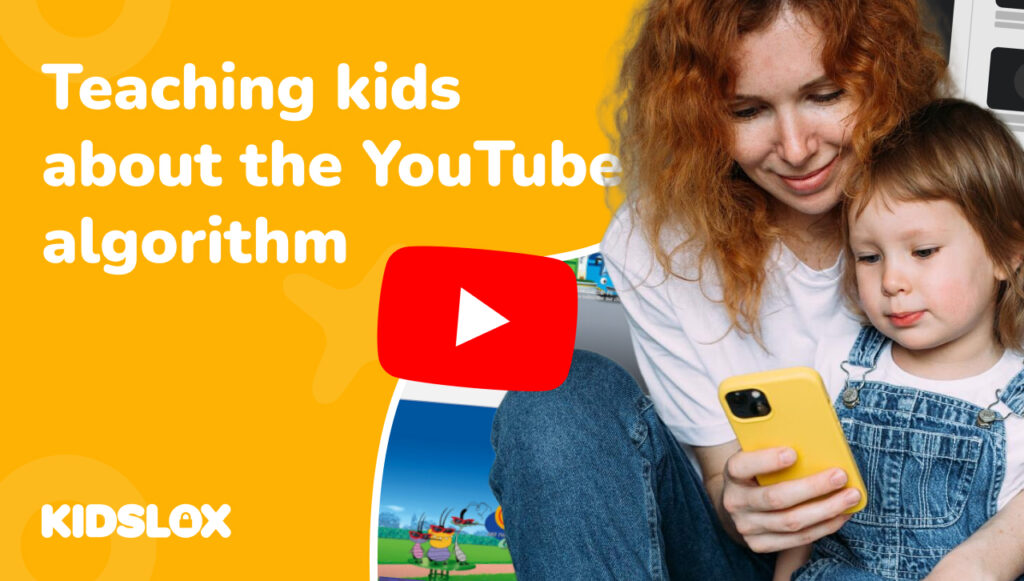As the world of technology continues to evolve, so does our need to understand how it works and how to use it safely. And in a world where our families are connected to digital devices 24/7, it is more important than ever for parents and guardians to help their kids learn the ins and outs of technology. That’s why having a solid understanding of technology literacy in the home is essential.
So what exactly is technology literacy? In short, it’s knowing the basics of how technology works and how to use it safely – but that’s not all. Technology literacy also includes understanding the more significant implications of using technology in our lives, such as data privacy, digital parenting, and cyber security.
The risks are too significant for us not to take technology literacy seriously at home. That’s why it’s important for families to arm themselves with knowledge on how to support their child’s technology literacy. In this guide to technology literacy, we will take a closer look at how to do just that.
What Is Technology Literacy?
Technology literacy is an essential concept in the digital age. It refers to the ability to use, manage, understand, and assess technology. It also includes digital literacy, the ability to access, evaluate, integrate, create, and communicate information using technology.
The idea of technology literacy has been around for some time. In the early days of computing, it was seen as a way to bridge the gap between those who had access to computers and those who did not. As technology has become more ubiquitous in our lives, so too has the need for people to be able to use it effectively.
Today, technology literacy is essential for families. With more and more activities taking place online – from shopping and banking to communication and entertainment – it’s important that everyone in a family can navigate these technologies safely and securely. Technology literacy can help ensure that all family members are aware of potential risks associated with using digital tools, such as cyberbullying or identity theft. It can also help them make informed decisions about how they use technology and how they protect their data online.
In addition, having a basic understanding of technology can open up new opportunities for families. Technology literacy can help parents support their children’s education by:
- Encouraging them to explore new networks, tools, and services.
- Helping them develop digital skills that will be important for success in the future.
- Showing children how technology can help solve problems.
- Teaching them about digital citizenship and online safety.
As you can imagine, the benefits of technology literacy are countless. But it’s learning how to use technology safely and securely that is most important.
The Risks of Unaware Technology Use
It’s no secret that technology brings risks. In an always-connected world, it can be hard to keep track of who is using what app or website or how data is being used and shared. And unfortunately, children and teens are especially vulnerable when it comes to online safety. They may not fully understand the implications of their digital actions or may be unaware of potential risks.
Not taking the time to learn about technology literacy in the home can leave families vulnerable in more ways than one:
Limited Communication
Technology has become a primary form of communication between people, and without technology literacy, families may struggle to keep up with the latest forms of communication.
This can lead to missed opportunities for connecting with friends and family members who use different technologies. And without understanding how technology works, families can miss out on important conversations or activities taking place online.
Data Privacy Issues
Without a basic understanding of data privacy and cyber security, families can be vulnerable to hackers accessing personal information online.
Parents need to know how to protect their family’s data and ensure that their children’s data is not being shared without their permission. These can include understanding who can access a child’s data, such as third-party apps.
Poor Education
Technology literacy is essential for students to succeed in school and beyond.
Without access to the latest technology tools and resources, students may struggle to keep up with their peers who do have access. This can lead to lower grades and fewer educational opportunities in the future – especially as more and more classrooms move online.
Lack of Career Opportunities
Not only will a lack of technology literacy hinder educational opportunities, but it can also limit career options. Many of today’s jobs require an understanding of technology, and without the necessary skills, job seekers may find themselves passed over for positions they are qualified for.
Social Isolation
Technology provides a way for people to connect with others around the world, but without a proper understanding of how it works, individuals may feel disconnected from their peers who are more tech-savvy than them. This can lead to feelings of loneliness or social isolation over time if not addressed properly.
In fact, the World Health Organization has now classified “excessive internet use” as a disorder – an issue that could be avoided with a proper understanding of just how powerful technology can be.
A Parent’s Guide To Getting Started With Technology Literacy
The risks of technology can be overwhelming, but there are ways to ensure that your family is well-versed in understanding and using it responsibly. Here are some tips for parents and guardians who want to start building their own technology literacy at home:
Step 1: Understand What Technology Literacy Is
The first step to building technology literacy is understanding what it means.
As we’ve discussed in this guide, it’s more than just knowing how to use a computer – it’s about understanding the implications of technology, such as data privacy and online security. Researching the basics of technology literacy can help you and your family stay on top of new developments in the world of tech.
How can you begin to learn yourself? Set aside time to learn about the basics of technology literacy. Many online resources are available, from YouTube tutorials to online courses and blogs. This will give you an understanding of what tech is and how it can be used safely in your home.
At Kidslox, we are constantly creating new content to help families better understand how technology works and how to stay safe online.
Step 2: Create A Strategy for Teaching Your Kids
Once you have a basic understanding of technology literacy, it’s time to start teaching your children.
But rather than simply setting a list of rules for them to follow, creating an environment where they can learn and grow is crucial. This means setting guidelines for internet use (such as limiting screen time) while also encouraging exploration and education when it comes to understanding how tech works.
For example, you can encourage your kids to experiment with coding languages or robotics projects. You can also take time to discuss cyber security and digital parenting with them – this will help them understand how their online actions affect themselves and others.
Finally, it’s important to teach your children about data privacy. Educate them on what information they should and shouldn’t be sharing online and how to recognize a potential scam or phishing attack.
Step 3: Set Balanced Boundaries For Tech Use
Once your children understand technology literacy, it’s time to set boundaries for how they can use tech in the home. This means setting rules on screen time, internet usage, and ground rules for online behavior. It’s essential to explain why these rules are necessary so that your kids understand them and their importance.
Setting boundaries for yourself as a parent or guardian is also important. Make sure you are following your own advice when it comes to using tech responsibly and setting an example for the rest of the family. Setting an example of responsible tech use will help your children understand the importance of technology literacy and how to stay safe online.
Step 4: Stay Aware and Up-To-Date
Technology is constantly changing, so staying informed about any changes that could affect your family is essential.
This means keeping up with the latest news about tech developments and staying aware of any potential online threats, such as viruses or scams. Educating and informed will help you ensure that your family uses technology responsibly and safely.
Not only will you stay informed about changes that could affect your family, but you’ll also have a much better understanding of the world in which we live. This will help you and your family make more informed decisions when it comes to technology use.
Quick Tips For Teaching Technology Literacy:
If you find it challenging to introduce technology literacy at home, try these tips:
- Approach the concept with curiosity, not fear. Technology literacy is an excellent opportunity to learn and explore together.
- Set an example of responsible tech use yourself. Model the behavior you want your children to emulate when it comes to technology use.
- Give them the tools they need to stay safe online, such as parental control apps or anti-virus software.
- Make it fun! Use games, activities, and other creative techniques to help them learn about tech.
- Have open conversations with your kids about technology literacy, so they can ask questions and express any concerns they may have.
Technology literacy is an important part of modern life that families must be aware of to stay safe online. Helping your children learn the basics of how technology works and how to use it responsibly can set them up for success in the digital world.
With patience, understanding, and creativity, you can create an environment where everyone in the family feels comfortable learning about tech!
Take a Step Forward in Technology Literacy and Safety with Kidslox
If you are ready to make your family’s technology use safe and secure, Kidslox can help. As a leading third-party parental control solution, Kidslox makes it easy for families to set boundaries for their children’s device usage, monitor their online activity and protect them from inappropriate content. With Kidslox, you can rest assured that your family is safe and secure online.
Want to learn more? Check out our guides on how to help your family engage with technology safely and responsibly. And learn how Kidslox can help you take a step forward in technology literacy and safety with your family.





